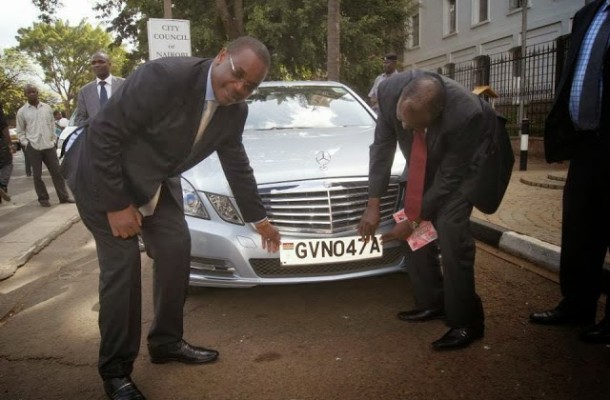Bebapay System for Paying Fares has not been Received Well.
The tap-to-pay technology was touted as a solution to many of...

The current series of vehicle registration plates in Kenya are on a white plate with black lettering and look quite similar to UK suffix style registrations.
The format is LLL NNNL, where ‘L’ denotes a letter and ‘N’ denotes a digit. The older series of number plates were black with white or silver lettering. The rear plates in the older series of number plates were yellow and black lettering.According to KNBS they are over 1,221,083 vehicles in Kenyan road as at 2009.
Though the Kenyan numbers are a sequence, there has been a few changes that have rather confused the issue. As there is no readily available reference there is some debate about the exact history, though from the recollections of various members the story can be pieced together.
The initial sequence used was T and this applied to all pre-war vehicles. Post-war series used the letters H and the W immediately prior to the K series which was introduced in 1950.
The first vehicle was registered in 1938. The series follow KAA 001 to KZZ 999
The K series was a major change in the numbering system necessitated by the greatly increased number of vehicles being registered. It was introduced on a regional basis as follow;
Other number were issued
The numbering system was centralised in 1980 and after that date all Kenya numbers are in sequence. Between 1980 and 1984 the unused numbers from Nakuru (KS), Mombasa (KT) and Kisumu (KU) were issued, KW (1984) being the first number that was never used regionally.
After the registration of vehicle KAZ 999, the second generation was started in 1989. The series follow KAA 001A to KAZ 999Z The present KAA xxx A series had, the advantage being that each third letter of the number provided for 23,976 registrations instead of the previous 999. Hence for the series to be finished about 575424 vehicle will be registered. KAF, KAO, KAI were omitted.
After the registration of vehicle KAZ 999Z, the third generation was started in 2007 as KBA 001A. The series will run from KBA 001A to KBZ 999Z
They are other number sequence that are used in Kenya.